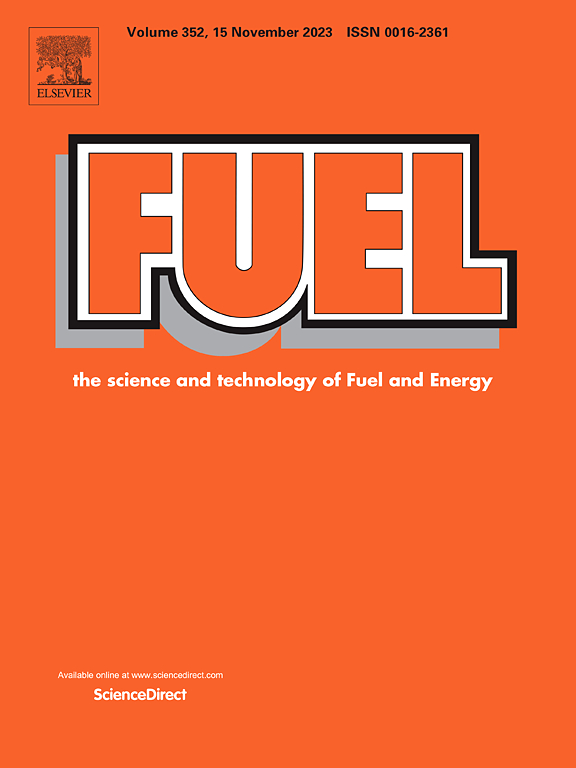Chemical looping of synthetic ilmenite. Part II: Multiscale perspective on modeling CLC and CLH
IF 6.7
1区 工程技术
Q2 ENERGY & FUELS
引用次数: 0
Abstract
This work investigates the chemical looping combustion (CLC) and chemical looping hydrogen (CLH) production processes of synthetic ilmenite at three relevant length scales: reactor, particle and reaction. Focusing on reduction with hydrogen, part I analyzed the reaction scale for CLC using thermogravimetric analysis (TGA). Complementary fixed bed reactor experiments for reduction and oxidation using pellets (CLC, CLH) and TGA experiments using powders or pellets (CLH) were now added. All measurements were used to develop a consistent multiscale model. Particle and reactor scales were described by one-dimensional volumetric models. The required complexity of the reaction model differed from case to case. Kinetic modeling for oxidations in the reactor was trivial, since gaseous reactants were fully consumed. Reductions with hydrogen, however, were more intricate. Considering the influence of equilibrium on the reactivity was crucial for CLH. The reduction for CLC was faster and even more complex. We novelly demonstrated how kinetics, originally derived only from TGA with powders, were not directly applicable to larger scales when underlying phenomena had been neglected. In order to overcome these limitations and achieve better consistency, equilibrium effects and the gas availability above the sample during TGA had to be considered. The suitability of the synthetic ilmenite for CLC and CLH was discussed based on the findings in this work.
求助全文
约1分钟内获得全文
求助全文
来源期刊

Fuel
工程技术-工程:化工
CiteScore
12.80
自引率
20.30%
发文量
3506
审稿时长
64 days
期刊介绍:
The exploration of energy sources remains a critical matter of study. For the past nine decades, fuel has consistently held the forefront in primary research efforts within the field of energy science. This area of investigation encompasses a wide range of subjects, with a particular emphasis on emerging concerns like environmental factors and pollution.
 求助内容:
求助内容: 应助结果提醒方式:
应助结果提醒方式:


